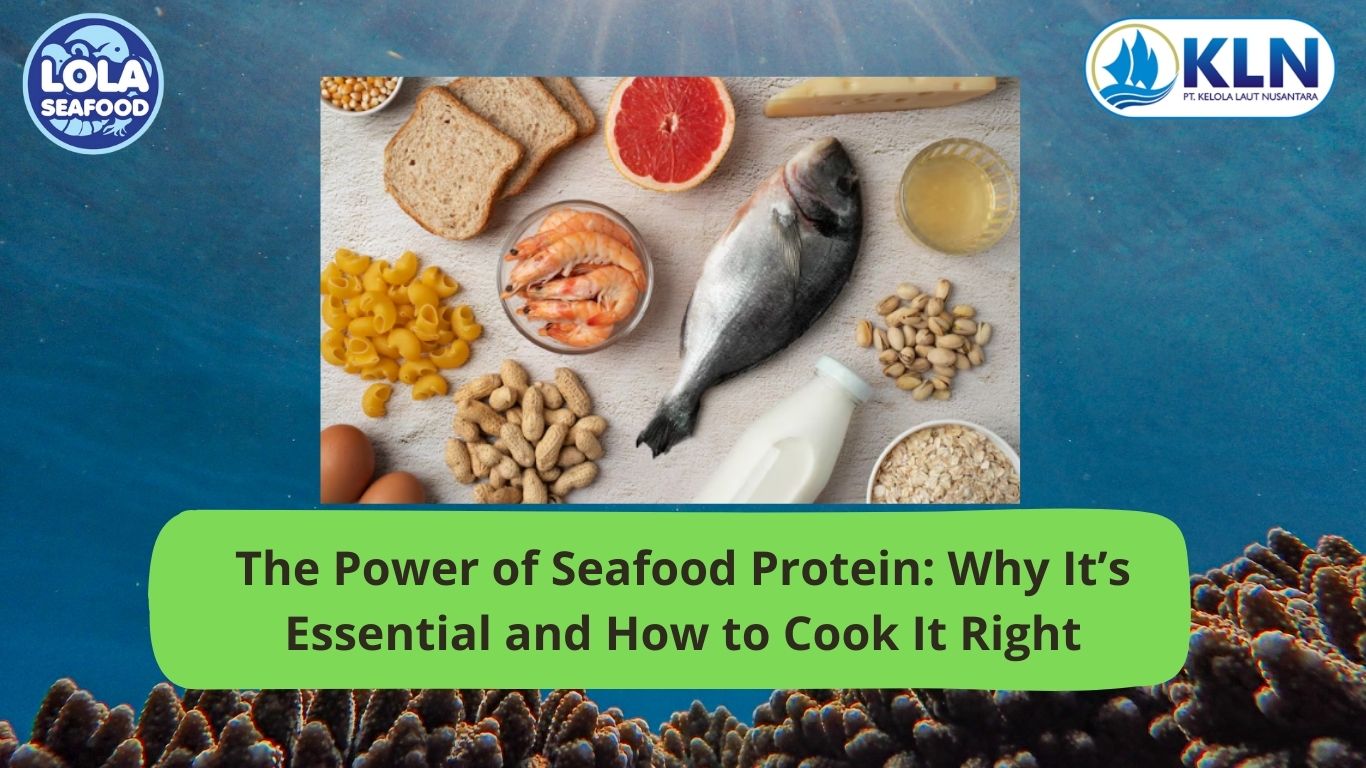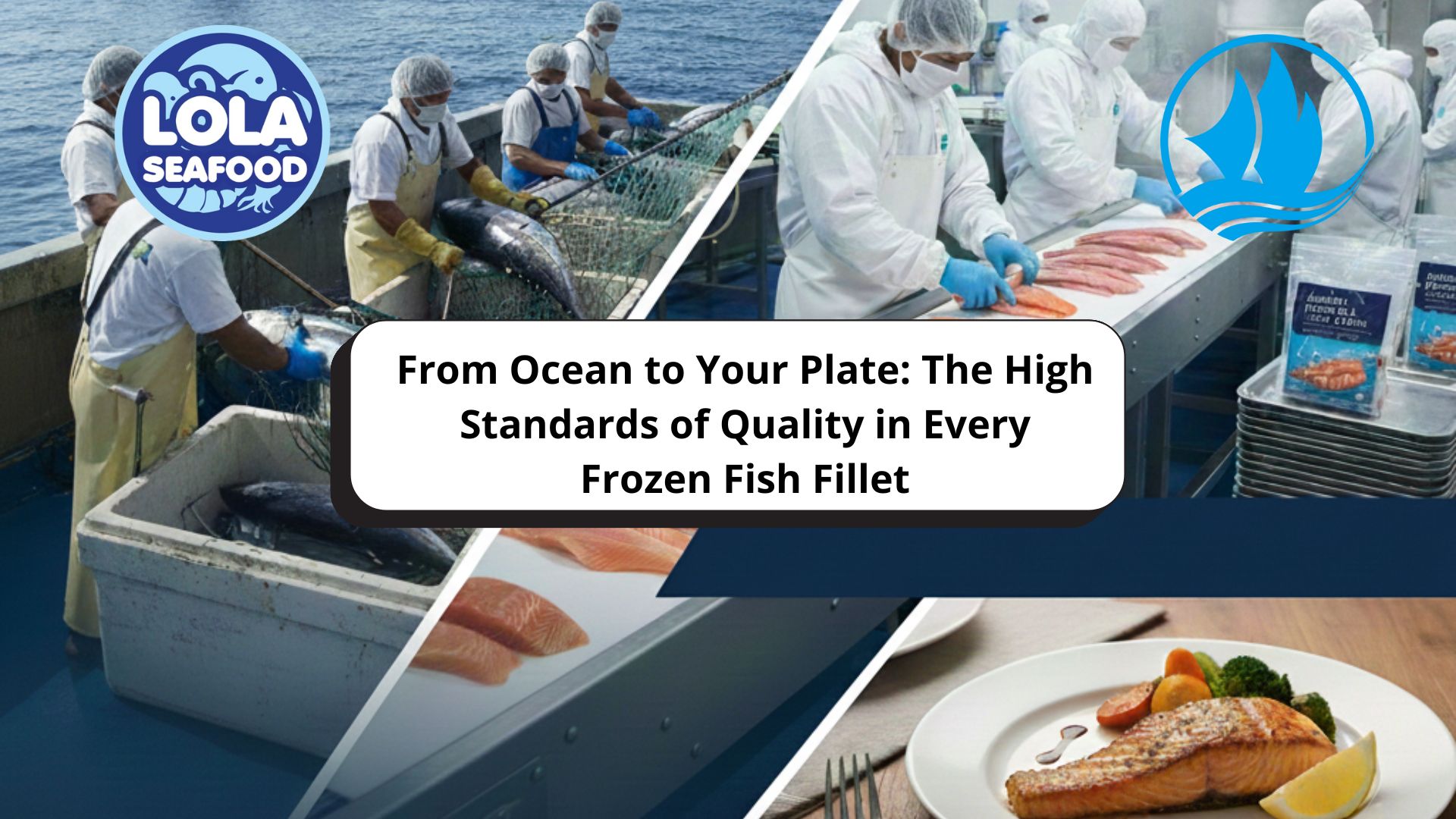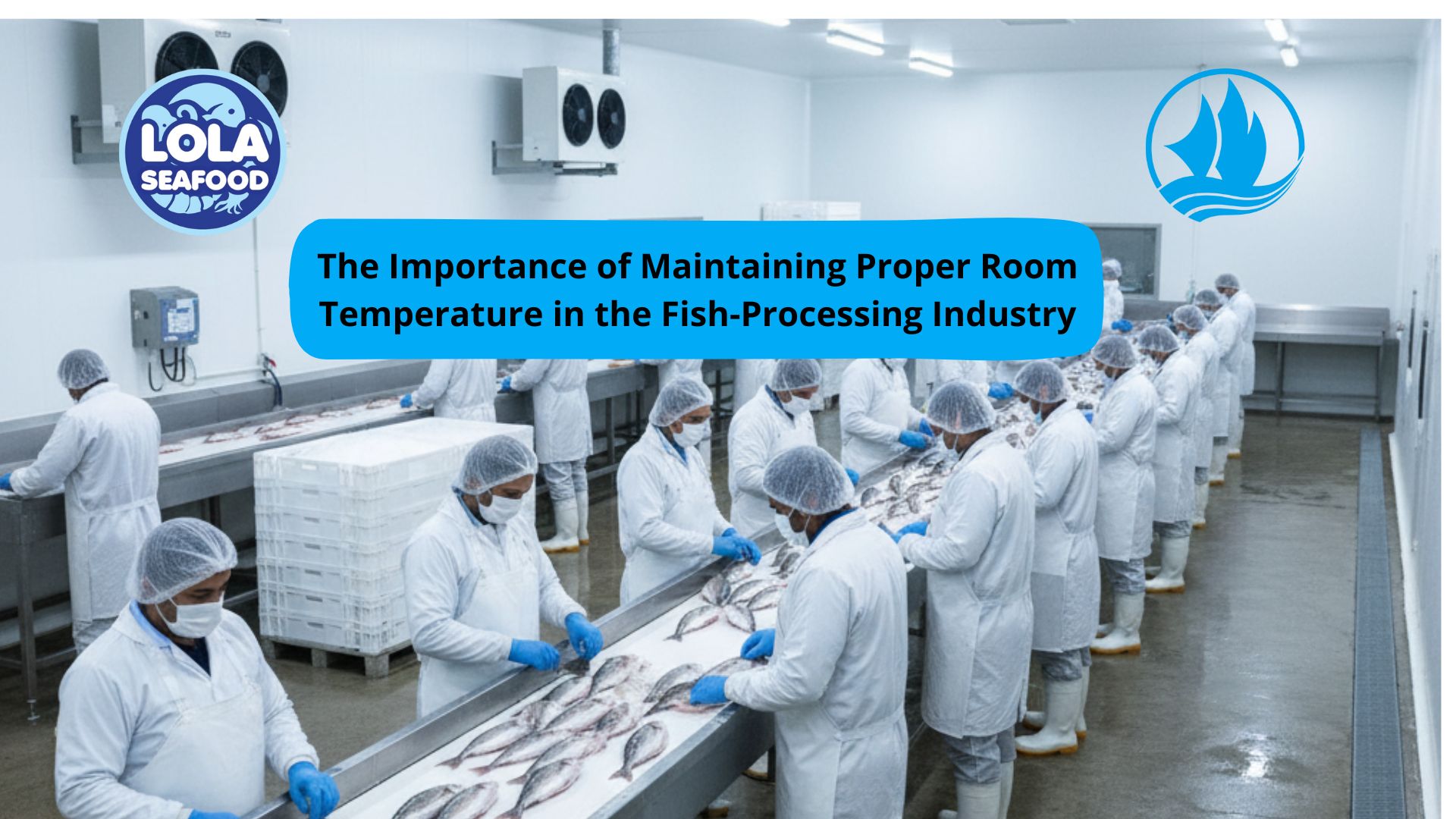The Power of Seafood Protein: Why It’s Essential and How to Cook It Right
By. Najih - 29 Sep 2025
Kelolalaut.com Seafood is one of the best natural sources of high-quality protein. Here’s a breakdown:
Why Seafood Protein is Special
- Complete protein → contains all essential amino acids.
- Easily digestible compared to red meat or poultry.
- Usually low in saturated fat and paired with beneficial nutrients like omega-3 fatty acids, vitamins, and minerals.
Protein is one of the most important nutrients for the human body. Here are its main functions:
1. Building & Repairing Tissues
- Protein is the body’s building block.
- Repairs muscles, skin, organs, and other tissues after injury or daily wear and tear.
- Essential for growth in children, teens, and pregnant women.
2. Muscle Development & Strength
- Provides amino acids that help build and maintain muscles.
- Important for athletes, active people, and preventing muscle loss with aging.
3. Producing Enzymes & Hormones
- Many enzymes are proteins → they speed up chemical reactions (like digestion).
- Certain hormones (e.g., insulin, growth hormone) are made of protein → regulate metabolism, growth, and energy use.
4. Immune System Support
- Antibodies (that fight viruses and bacteria) are made of protein.
- Without enough protein, the body’s defense system weakens.
5. Transport & Storage
- Hemoglobin (protein in blood) carries oxygen throughout the body.
- Other proteins transport nutrients like iron, vitamins, and fats.
6. Energy Source (Backup)
- Main energy comes from carbs and fats, but protein can be used if needed.
- 1 gram of protein = 4 kcal of energy.
7. Maintaining Healthy Skin, Hair & Nails
- Keratin, collagen, and elastin (all proteins) are vital for strong hair, skin elasticity, and nail growth.
8. Fluid & pH Balance
- Proteins in blood (like albumin) help balance fluids between tissues and blood vessels.
- They also help maintain acid–base balance (pH stability) in the body.
Average Protein Content in Common Seafood (per 100 g, cooked)
|
Seafood |
Protein (g) |
Notes |
|
Tuna |
23-25 g |
Very leas + High Omega 3 |
|
Salmon |
20-22 g |
Protein + Rich Omega-3 |
|
Sardines |
20-21 g |
Also high in calcium |
|
Mackerel |
19-20 g |
fatty fish + High Omega 3 |
|
Shrimp (Vanname, etc) |
18-20 g |
Low calorie, lean protein |
|
Crab |
18-19 g |
Sweet Taste, low fat |
|
Squid |
16-17 g |
Moderate protein, low fat |
|
Mussels |
12-14 g |
also a source of iron and zinc |
|
Oysters |
9-10 g |
Low protein, high in mineral |
|
Lobster |
18-19 g |
Lean protein, Luxury seafood |
Health Benefits of Protein in Seafood
- Builds & repairs muscles → great for athletes and growth.
- Supports immune system with amino acids.
- Keeps you full longer → helps with weight control.
- Maintains skin, hair, and nails.
- Combined with omega-3s → supports brain and heart health.
General Tips for Cooking Protein
- Avoid overcooking → keeps proteins tender and prevents nutrient loss.
- Use moderate heat → high heat can denature proteins, making them tough.
- Moist cooking methods (steaming, boiling, poaching) preserve tenderness and nutrients.
- Dry cooking methods (grilling, roasting, pan-searing) add flavor but watch for burning.
Protein in Seafood (Shrimp, Fish, Crab, Squid)
- Boiling/Steaming: Best for preserving natural taste and tenderness.
- Grilling/Baking: Adds smoky flavor, healthy if little oil is used.
- Sautéing/Stir-frying: Quick method that locks in flavor, especially with garlic and spices.
Protein in Meat and Poultry
- Grilling/Roasting: Use medium heat, avoid charring (can produce harmful compounds).
- Stewing/Braising: Slow cooking makes proteins soft and retains minerals in broth.
- Sous-vide: Cooks evenly at controlled temperature, keeps protein juicy.
Protein in Eggs
- Boiling/Poaching: Keeps nutrients intact, no added fat.
- Scrambling/Omelet: Quick and versatile, but use little oil.
- Baking (frittata, quiche): Great for combining with vegetables.
Plant Protein (Beans, Tofu, Tempeh, Lentils)
- Boiling/Stewing: Softens beans/lentils while keeping protein available.
- Grilling/Seared Tofu or Tempeh: Adds texture and flavor.
- Curries/Soups: Combine with spices and vegetables for complete meals.
If youre interested in our Halibut Fillet Skinless please do not hesitate to contact us through email and/or Whatsapp




.jpg)

.jpg)

.jpg)